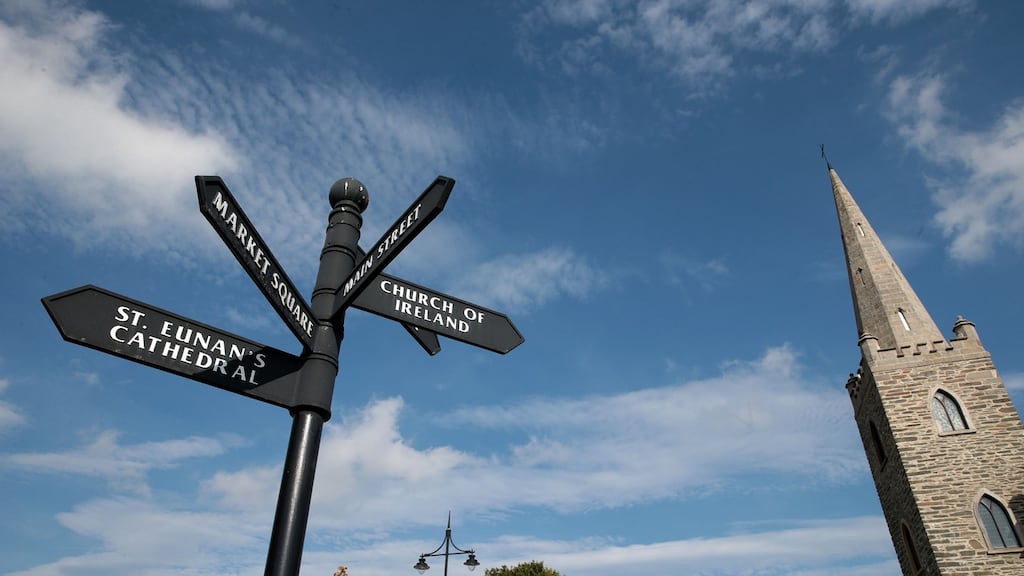At a wintry bus-stop in Letterkenny on Friday evening, waiting for McGinley’s 5.45pm service to Dublin, I found myself marvelling at the sheer, sprawling vastness of Donegal, as indicated by the local transport network.
There were buses heading in every direction from the town: east towards Derry and Inishowen, north towards Fanad, westwards to Bloody Foreland, and south towards Ballybofey. There was even one going to Galway, which had me mentally echoing the old Irish travel advisory – I wouldn’t start from here if I were you.
Many of the travellers were students, making the last legs of longer journeys home for the weekend. As I watched them depart in the various directions, a half-remembered old song started playing in my head, with improvised lyrics: “We’re happy to be back again/On buses big and small/For there’s no place on earth just like/The homes of Donegal.”
As for myself, I was somewhat less than happy at the continued non-appearance of the 5.45pm to Dublin. Six o’clock came and went, and there were only me and a couple of others left, including an old man heading for Milford.
“Will the rain ever stop?” he wondered aloud at one point, before telling me there hadn’t been a dry day here since Christmas. But if the rain didn’t stop, at least his bus did, eventually, leaving me alone. And that’s when I checked the McGinley’s timetable on my phone again and discovered that the 5.45pm service was a figment of my imagination. The last departure to Dublin had left at 5.15.
Mercifully, the nearby Bus Éireann station had a later one, at 7.45pm (although that must have been GMT – it actually left at 8pm Donegal time). So to pass the interim, I did what I had meant and failed to do earlier and embarked on a walking tour of the town.
In the original Irish, Letterkenny was “the Hillside of the O’Cannons”, named after an explosive-sounding clan who dominated the area once. The O’Cannons are long gone, but the hillside survives, clearly, because the town’s main street stills climbs it.
It climbed an even bigger hill last year when Letterkenny won the national Tidy Towns award. This would have been a challenge for any conglomeration of 20,000. But the local tidiers had to start from a base at which, a few years ago, the place might have been nicknamed Litterkenny. In one survey, it rivalled Dublin’s Liberties for possession of Ireland’s dirtiest streets.
Clean as it is now, like many Irish towns it feels a bit hollowed out by the big retail centres on its perimeter. Still, it has made the most of what remains, including Ernest Speer’s drapery shop – an old-world place where the floor is wooden, the clothes are on shelves behind the counter, and a pot-bellied stove supplies heating.
Back in 2007, the current proprietor, Lester Speer (his father Ernest died in 1983), was forced to consider erecting shutters, after some eejit put his boot through the shop's large, expensive windows. It wasn't the first time. Happily, as of now, the premises remains unshuttered, and – touch wood (or glass) – there hasn't been a repeat.
Despite the surname’s obvious Germanic origins, there are Speers scattered all over Donegal (a situation that sounds at least as dangerous as the one-time proliferation of O’Cannons). Lester has no idea where his ancestors originated, however. In any case, they’ve long since gone native.
Whether the late Ernest, never mind the O’Cannons, would recognise 21st-century Letterkenny is another matter.
Among other things, it now hosts a Hindu temple, and at a series of English language workshops in the town last year, there were 18 nationalities. In fact, I saw the new multiculturalism up close during my own brief visit.
It was literacy, rather than litter, that had brought me to Letterkenny. I was there to speak at the 2016 launch of “Read DL” – a very worthy project wherein, each year, a different book is circulated to schoolchildren all over Donegal. They then read, think, and write about it.
The latest choice was a topical one – Gerry Hunt's Blood Upon the Rose, an account of the 1916 Rising. But it was also unusual, being in comic-book format. It certainly caught the imagination of the schoolchildren who attended the launch. They must have represented several continents, I thought, never mind countries. But their grasp of Irish history was no less impressive, as they acted out a Rising-inspired tableau, both touching and funny, in English and Donegal Irish.











